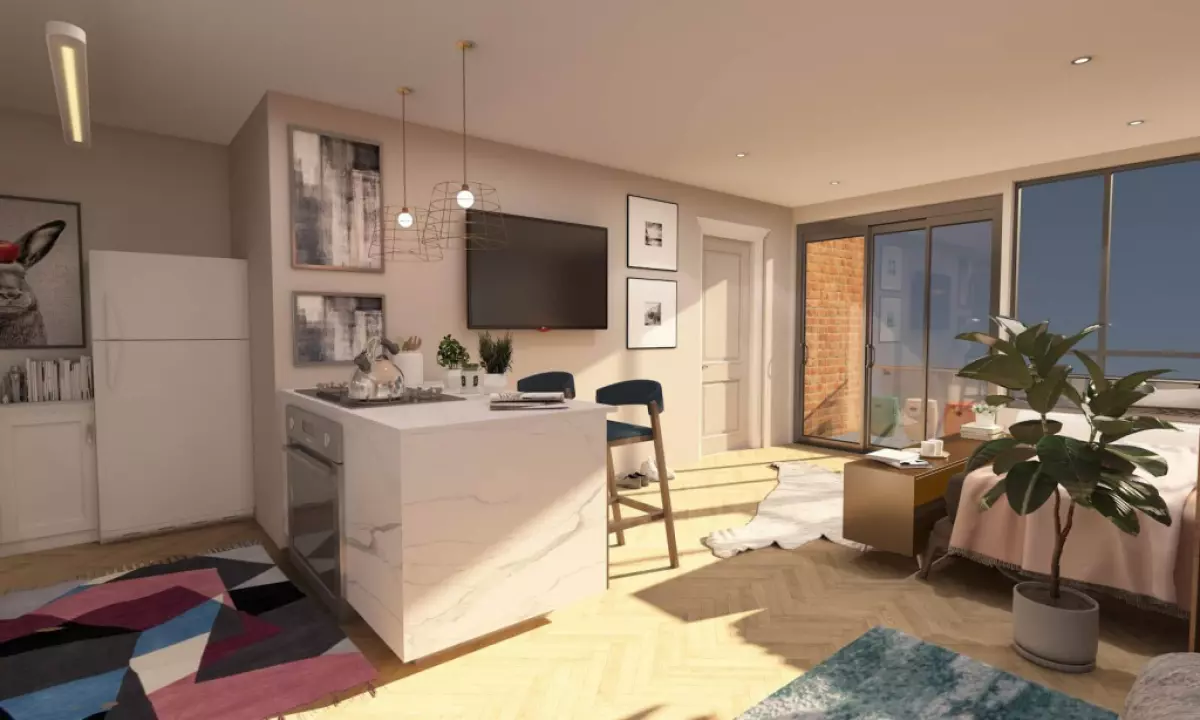 Image Credit: Foyr
Image Credit: Foyr
Are you an interior designer looking to take your space planning skills to the next level? Look no further! In this guide, we will provide you with ten expert tips that will help you think differently about space planning and impress your clients with your expertise. Get ready to create spaces that your clients will love more than they ever thought possible.
Understand the Natural Focal Point
Tip #1: Embrace What Already Exists
When planning a space, it's essential to understand the natural focal points in the room. These focal points could be anything from a beautiful window to a stunning fireplace. By planning around these existing features, you can create a design that highlights their beauty and functionality.
Create Versatility and Functionality
Tip #2: Remove Obstructions
In some cases, you might need to create a new focal point or remove obstructions that hinder the functionality or versatility of a space. By doing so, you can open up possibilities for different layouts, furniture arrangements, and user experiences.
Balance the Space Appropriately
Tip #3: Less is More
When it comes to space planning, balance is crucial. Avoid overfilling a room just because it's empty. Instead, focus on providing enough seating, storage, or table space while maintaining a spacious and comfortable ambiance.
Get a Real Sense of Space
Tip #4: Utilize the Physical Space
If you have access to the physical space you are working with, take advantage of it. Get a more accurate estimate of how much space furniture or other elements might consume by marking off sections on walls or floors. This will give you a better understanding of the size and impact of your design choices.
Consider Practicality and Storage
Tip #5: Welcome Your Guests
When designing an entrance or foyer, prioritize ample walking space and ensure that storage solutions are readily available. Your clients will appreciate having a designated area for their shoes, coats, and personal belongings as soon as they step into their home.
Create Clear Sections
Tip #6: Define Different Areas
Large spaces can be intimidating, but you can make them more inviting by creating defined sections or areas. Even without physical walls, thoughtful design additions such as furniture placement, decor, and seating arrangements can make their intended use clear.
Human-Centric Design
Tip #7: Prioritize Comfort and Budget
Human-centric design means tailoring a room to suit healthy human habits. Consider the number of people who will use the space and adjust the layout accordingly. Additionally, keep your client's budget in mind while planning their ideal space.
Embrace Openness
Tip #8: Create Unobstructed Views
Whenever possible, strive for unobstructed views into other rooms or outside. This not only enhances the visual appeal but also creates a sense of spaciousness and connectivity throughout the entire space.
Scale Down for Small Rooms
Tip #9: Find the Right Fit
If you're dealing with a small room, don't let limitations discourage you. Look for furniture and fixtures that can be scaled down without compromising functionality. By choosing appropriately sized windows, lighting fixtures, and seating, you can maximize the available space without sacrificing your client's needs.
Multi-Purpose Rooms
Tip #10: Think Outside the Box
In multi-purpose rooms, try to incorporate elements that can serve multiple functions. Half walls or glass doors can help separate spaces while maintaining a sense of openness. This allows for privacy when needed while still creating a connected and cohesive design.
Bonus Tip: Consider Special Needs When planning a space, take into account any specific needs your client might have, such as physical limitations, disabilities, or elderly family members. By accommodating these needs, you ensure that the space is safe and usable for everyone.
Resources for Learning and Skill Development
 Image Credit: Foyr
Image Credit: Foyr
Looking to enhance your interior design skills and connect with fellow design enthusiasts? Join the Foyr community, a leading platform designed for interior designers like yourself. By joining, you gain access to comprehensive learning modules taught by established designers, networking opportunities, job boards, and more. Start growing your confidence and expanding your opportunities in the world of interior design.
Try Foyr Neo for Your Next Project
Ready to bring your design ideas to life? Try Foyr Neo, an online interior design tool designed specifically for designers. With just a few clicks, you can create stunning 4K renders and floor plans that will help your clients visualize their dream space. Sign up for our 14-day trial and see how Foyr Neo can elevate your interior design projects.
In conclusion, by following these expert tips and considering the unique needs of your clients, you can create exceptional spaces that will leave a lasting impression. Embrace creativity, balance, and functionality to transform any room into a space that exceeds expectations. Remember, the key to successful space planning is understanding the potential of each space and using it to create an environment that truly enhances the lives of those who inhabit it.












